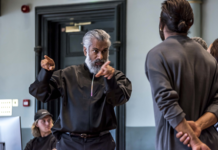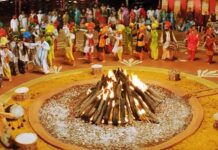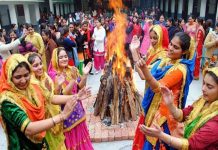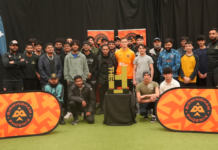Exploring the South Asian Contribution to the Great War

Asian contributions to both world wars are not widely known about, despite the fact that India raised the world’s largest volunteer armies: 1.5 million in WWI and 2.5 million in WWII. World War I marked an important watershed. For the first time, Indian soldiers were fighting on European soil. They fought in all the major theatres of war on land air and sea, alongside British troops. Their many awards for bravery, as well as their war graves and memorials on the battlefields, are testimony to their sacrifice in the service of Britain. Unrecognised for decades, their contributions are only now being fully acknowledged.
In August 1914, soon after the outbreak of war when the British Expeditionary Force had been almost wiped out, Britain called on the Indian Army to fill the vital gap left in its defences. The first 28,500 Indian Army troops arrived on the Western Front on 26 September. They played a crucial role in holding the line and are said to have arrived just ‘in the nick of time’. Indian soldiers were deployed widely and fought in the battles of Ypres, Neuve Chapelle, the Somme and Passchendaele and in even greater number in Mesopotamia.
Indian soldiers did not fight as a separate army, but alongside British units, which led to a certain amount of social interaction. These contacts were fostered by the common experience of the horrors of trench warfare. Pictured above, are the 3rd Horses regiment playing football against the 18th Lancers in July 1915, with a group of French children looking on..jpg)
The India Office and War Office wanted Indian soldiers to receive the same level of care as their British counterparts. Indian style food was provided for their tastes, and the Indian style pavilion hospital was considered to help the fighters feel ‘at home’. Burial rights were also observed according to the respective religions of the fallen. As their letters suggest, though complimentary about the care they received, soldiers were critical of the restrictions placed on their movement. Chaperoned at every occasion, with every outing carefully stage-managed, many felt like prisoners.
Indra Lal Roy came to Britain for his schooling in 1908. Keen to join Britain’s war effort, he enlisted with the Royal Flying Corps, the precursor of the Royal Air Force. He had to overcome many obstacles to receive his commission. He flew as part of George McElroy’s Squadron 40 and was a successful fighter pilot. Between 6 and 19 July 1918, in only 170 hours and 15 minutes of flying time, he shot down 10 enemy aircraft. He died in action, aged 19 on 22 July 1918. He was posthumously awarded the Distinguished Flying Cross.
The large number of Indian wounded in the military hospitals along Britain’s southern coast brought with it the need for appropriate burial provisions, as some soldiers did not survive their injuries. The burial ground near the Woking Mosque received the bodies of 21 Muslim soldiers.
Gurkha, Hindu and Sikh soldiers were cremated on the South Downs near Patcham where three concrete platforms mark the place of the cremations. In all, 53 soldiers were cremated there. The Chattri, unveiled there in 1921, is a lasting memorial to the fallen Indian soldiers of World War I. Every year in June, a remembrance service is held at the site





























